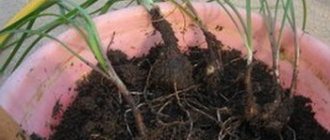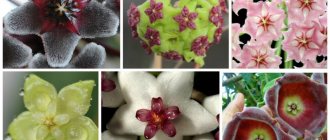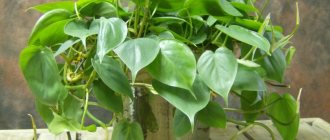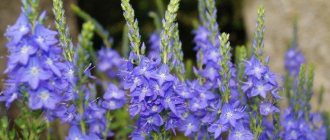The godson can rightfully be called many-sided. Despite the fact that it belongs to succulents, the external characteristics of some representatives may differ strikingly from the usual description of the genus.
Among the most common for cultivation are the large-tongued ragus flower and such an unusual species as rowley - this flower does not require particularly close care at home, because the leaves tend to accumulate moisture and thereby tolerate drought. It is still worth approaching the organization of the microclimate by studying the standards previously recommended by experts.
Large-tongued variegated groundsel, what it looks like, what family it belongs to
Macroglossus belongs to the Asteraceae family or, as it is also called, Asteraceae. It can be either in the form of a vine, or in the form of a subshrub, shrub, or tree. Due to its high resistance to weather changes, it can grow anywhere on the planet.
Common groundsel
Depending on the species and local climate, the shape of the plant can vary significantly. When the seed pods are empty, the stems do not always become pubescent - they, like the leaves, may remain bare. Leaves can be whole or dissected, oval or heart-shaped, elliptical, lobed or pinnate.
This is interesting! The cross came to Europe from Africa, Namibia. Under the positive influence of climate, it reached a length of 50 cm and was quite sprawling, which is why it attracted biologists of that time. Taking it for examination, they distributed the seeds throughout the world.
Large-tongued ragwort is an evergreen vine. The leaves of the flower are triangular or pentagonal in shape, with one end protruding more than the others. This is the “tongue” from which the plant gets its name. The length of the leaves can reach 8 cm. Their color is variegated, green with yellowish-white spots and stripes.
Note! The sap of the plant is poisonous, so it is better to grow it away from animals and children.
Popular varieties of ragwort
The tallest representative of the Senecio species is the perennial ragus of the Haworth variety. Its length can reach 30 cm, shoots can be either single or branched. Even when hatching, the leaves acquire silvery fluff; in adult plants they are up to 6 cm long. The flowers of Senecio Haworthii are dim, yellow or orange, and have a spherical shape.
Other varieties of godson:
- Creeping evergreen groundsel is a perennial, not covered with silvery down. From the description of the culture it is clear that it reaches a height of only 20 cm and has rough stems (6 mm). The leaves, shaped like lancelets, can be up to 4 cm long. All flowers are painted white and have the shape of baskets. The leaves are distinguished by a greenish-blue tint.
- Senecio cultivar Herreianus. Its second name is Nailleaf. The leaves of the crop are similar in appearance to gooseberries and have slightly pointed ends. This variety needs to be grown in a sufficiently lit place, but at the same time it should not be exposed to sunlight - the leaves can get burned.
- Raspberry variety Fulgens. It is distinguished by bright, almost fiery, flowers on thin stems, round flattened leaves of a bluish tint. Many gardeners also call it Kleinia Fulgens.
- Raspberry Blue differs not only in color. This plant has arrow-shaped leaves, from under which flower stalks emerge in the form of baskets. The leaves can be either flattened or quite voluminous.
- Greater Tolstovaty ragwort was discovered in Madagascar and brought by researchers. It was large in size and could reach a height of half a meter. Moreover, the leaves themselves were no more than 5 cm, everything else was stems. Senecio major Crassissimus can be green or have a blue or gray tint.
- Ficus ragus. It has recumbent, weakly branched stems and narrow elongated leaves of gray-green color. In April-May, small greenish-white flowers appear on it.
Blooming ragwort mikaniiformes
Many people, especially beginners, confuse ragwort with ivy because of the shape of the leaves of some of its varieties. This comparison is incorrect, since these are representatives of different families.
Pests and diseases of ragwort
Representatives of the Senecio genus can be considered practically immune to insect pests and diseases of indoor “pets”. However, even a slight deviation from the rules of care can serve as a trigger for the appearance of powdery mildew or rot, causing an invasion of aphids, mites and mealybugs. You need to get rid of pests by making up for deficiencies in care and carrying out mechanical treatments. It is necessary to use insecticidal preparations only if the situation is advanced.
If the plant is not properly cared for, various diseases can occur.
Popular problems when growing ragwort.
- Blotches on foliage, their drying out and death in hot, excessively dry climates and lack of watering.
- When direct sunlight hits the leaf blades, dry spots may appear on them.
- If the watering schedule is not followed, yellow or brown stains may appear on the foliage.
- If the plant lacks light, this can be indicated by the growth of small foliage and its sparse arrangement on the stems.
When leaves are burned, dry spots appear on them.
Pests that commonly attack ragwort include:
- thrips;
- spider mite;
- Scale insects.
It is worth telling in more detail about each pest.
Sometimes Rowley's ragwort is affected by pests
Spider mite
The tick is quite difficult to notice due to the fact that its body length is only 5 mm. But the presence of this pest can be revealed by a cobweb.
The poutine mite is also identified by yellow spots on the leaves, which appear due to the fact that the insect consumes plant sap.
The following steps will help rid the plant of the parasite:
- first you need to get rid of the affected areas;
- give the plant a warm shower;
- the cross is treated with soap solution and insecticidal preparations;
- after treatment, the plant is covered with polyethylene for 3 hours;
- the window sill on which the ragwort grows needs to be treated, like all other indoor pets;
- after a week the treatment must be repeated.
Spider mites are not always easy to spot
Shchitovka
This pest is no less dangerous to the plant than the mite. The length of its body is 5 mm. The insect prefers to be located at the bottom of the leaf blade. Male individuals have wings, and this allows them to fly freely from one plant to another.
After the scale insect, sticky traces remain, by which it can be identified. You can also get rid of this pest using a soap solution. But you don’t need to spray it - you need to dip a sponge into it and wipe each leaf with it.
A soap solution will help get rid of scale insects
Special chemicals can also be used to treat the plant. However, you need to keep in mind that they are poisonous and are not suitable for use in enclosed spaces.
Thrips
These pests are very small, making them very difficult to notice. Their body length is 0.5-1.5 mm. Insects feed on plant sap, which is why yellow spots appear on the foliage. Gradually the foliage begins to dry out and fall off.
You can rid the plant of pests by giving it a warm shower and then treating it with medications. Fitoferm, Aktelik and Intavir have proven themselves well.
The drug "Intavir" will help get rid of thrips
Often the plant gets sick with horse rot. It appears due to constantly damp soil. To prevent the plant from getting sick, you need to follow the watering regime.
Caring for ragwort flowers at home
Large-tongued ragwort is undemanding in care, but still has its own characteristics that must be taken into account.
Illumination and temperature conditions
Common groundsel Senecio vulgaris
Raspberry grows best in a sunny area, so when planting in the garden, it is not advisable for taller plants to tower over it. At the same time, you need to protect it from strong northern winds so that the thin rods do not freeze. When growing in pots, it is best to place the flower on a windowsill facing west or east.
Important! Raspberry is very difficult to tolerate severe frosts and any cold snaps, so there is no need to place it in a room where the temperature is below +7 degrees. It is worth making sure that in winter it does not rise above +15 degrees. In the summer, homemade ragwort can be placed outside in the sun during the day if the air temperature does not exceed +23 degrees.
Rowley plant variety
Watering rules and humidity
Raspberry is a plant that thrives when the air indoors or outdoors has low humidity, regardless of temperature. It is noteworthy that it is not necessary to moisten the leaves or the entire plant, and if dust accumulates, you just need to wipe it with a dry napkin or rag.
The frequency of watering the ragwort varies depending on the time of year. In summer, the soil is moistened 2 days after its top layer is covered with a dry crust. In autumn, watering should be reduced, and in winter, stopped altogether. Do this smoothly, gradually reducing the amount of water or increasing the time interval between waterings.
Fertilizing and soil quality
It is advisable to start feeding the groundsel in March and gradually stop fertilizing in August. Feeding should be done no more than once every 2 weeks. You can use a simple fertilizer for succulents or a special one for aster plants.
The soil is bought in specialized stores or prepared independently. It should consist of sand and leaf soil. When purchasing soil, it is important to check with the seller whether the soil for ragwort contains nutrients. The soil should be loose with neutral acidity.
Flower container size
If the ragwort flower is small or just bred, you need to choose a pot with a diameter of no more than 6 cm. For more mature plants, the diameter will be larger.
Large tongue
In nature, the variety is found in South Africa, distributed in the arid province of Natal. It has a second name - Natal ivy. The large-tongued variety is an evergreen, fairly tall flower that can grow up to 2–3 m in length. This species is called Big Tongue because of the shape of the leaf - triangular or pentagonal, with a protruding sharp end - the tongue.
The sides of the sheet are strictly outlined over its entire area. The leaves are fleshy and long, up to 7–8 cm in length. The color is variegated, with blurry yellowish-cream spots on the emerald background of the leaf blade. The veins are well defined. The leaves are dense and have a waxy coating - protection from rapid evaporation of moisture. The stems are dark purple, later turning brownish-purple. Blooms in late winter - early spring, with pale yellow tubular flowers.
Note! The flower is poisonous, contact with skin should be avoided - it causes irritation and allergies.
The variety is hardy and unpretentious. You can place them on any window sills, except for the northern part of the house - there is a risk of infection with fungal diseases. Prefers diffused light. South-facing windows should be shaded on summer days to avoid leaf scorch. The temperature in summer is up to 22 – 24°C during the daytime and up to 15 – 17°C at night. In winter, the ideal temperature is 12 – 16°C.
If light and temperature conditions are disturbed in winter, the flower may shed its leaves.
Prefers slightly acidic, loose, moderately fertilized soil. Drainage is required, the substrate must be breathable. You can use ready-made substrate for cacti and succulents. You can prepare the following mixture yourself:
- Turf soil – 1 hour.
- Leaf soil - 1 tsp.
- River coarse sand -1 tsp.
- Crushed charcoal – 1 tsp.
The pot or container for planting should be wide and small, shallow, clay, with a rough surface. The flower is replanted once every 2–3 years in the spring; young flowers can be planted more often. The peculiarity of this variety is its high humidity content. Additional spraying is required in summer daily, in winter 2 - 3 times a week.
Due to the intensity of growth, regular spring pruning and support for the stems is required.
Watering in winter is moderate. Carry out as the top layer of soil dries. In spring and summer, water in small doses, 2 – 3 times a week. In spring and summer, fertilize with special fertilizers for deciduous ornamental plants. At rest, no feeding is required. Large-tongued ragwort propagates by cuttings or aerial stems.
It is necessary to avoid swampiness of the substrate and lack of light - rot and aphids appear. To prevent pests, insecticide treatment is required.
Features of plant transplantation
Rowley's ragwort Senecio rowleyanus - what kind of flower
An adult ragwort does not need frequent replanting. Gardeners do not recommend doing this more often than once every 2 or 3 years.
Important! Only planted indoor ragwort flowers need to be replanted every year, constantly renewing the soil and replenishing it with nutrients.
Young plants
How to care for an unusual pet?
Caring for ragwort rowley will not require complex manipulations, but when maintaining it, it is worth taking into account that it is a succulent plant accustomed to a different climate
Lighting Features
This flower is best suited to bright but diffuse lighting. You can place a flower pot on any window except the north one. When there is a lack of light, the plant begins to reach for its source, shoots and internodes lose their decorative effect.
If you place a container with ragwort on the north side, then most likely it will not flower. But on a south-facing window, it is recommended to protect the succulent from the scorching midday sun, for example, by hanging a tulle curtain.
Temperature
It is associated with the season, so in summer the optimal temperature is from +22 to +26 degrees. In winter, the succulent prefers to rest in the cool, it is advisable to keep the flower in a room where the air temperature is +12 - +15 degrees.
In the warm season, the flower can withstand even hotter weather; a drop in temperature below +10 degrees is much more dangerous for it; in this case, the ragwort dies. When wintering in warm conditions, the leaves of the ragwort fall off.
Watering
During active growth - from early spring to October, it is recommended to water the plant moderately. You can navigate by the condition of the soil - if the top layer is dry, then it’s time to add moisture
It is important to avoid waterlogging of the soil, as in such conditions the plant will rot.
From late autumn to February, the amount of watering is reduced to a minimum. Just don’t let the earthen ball dry out completely. Use soft, settled water, which is not advisable to pour on the beaded leaves.
Air humidity
“Strings of pearls” are not particularly sensitive to humidity levels and tolerate dry indoor climates well, even with heating appliances running. There is no need to spray the plant, except that it is recommended to place it away from radiators and other heat sources.
Fertilizer application
Raleigh's ragwort is fed regularly, from spring to the end of October. It is better to use liquid mineral formulations intended for cactus and succulent crops. If such funds are not available, you can apply fertilizers for deciduous vegetation, but in half the dosage. During winter dormancy, all succulents do not need to be fertilized, and Rowley's ragwort is no exception.
Trimming
The luxurious shoots of the plant are not pruned, but if the owner wants them to branch more strongly, you can periodically pinch their tops. If the flower is kept in good conditions, then on average the shoots grow 20–30 cm per year.
The succulent can withstand various changes, but drafts can cause the greatest damage to it. It is also not recommended to rearrange the flower pot and turn it without serious reasons. Rowley grows profusely, so you should immediately take care of a spacious place for the green pet.
Flowering and dormant period of the plant
Rowley's godson: home care and methods of reproduction
During the flowering period, ragwort most of all needs nutrients and proper care. It is imperative to monitor air humidity and temperature. The latter should be within +24 degrees during the growing season and +15 degrees during the dormant period.
Type and shape of flowers
When flowering occurs, you can notice differences in the inflorescence of individual species. They can be collected in scutes or remain solitary, have a small or large size. The flowers themselves can be basket-shaped.
Large tongue
Large-tongued groundsel - False ivy - Seneciomacroglossus.
Leaf succulent is a long-lived plant with creeping stems. The shoots can reach 1.5-3 m in length, branch slightly and slowly become woody.
The silhouette of the leaf blades follows the outlines of the spearhead and the leaves of true ivy. The inflorescences are on a long peduncle, very similar to field daisies. They have a yellow fuzzy center and light petals around them.
The variety Variegatus is distinguished by its two-colored leaves. Their dark green surface is painted with contrasting straw or smoky spots of arbitrary shape and location.
Reproduction of Senecio macroglossus
Reproduction of ragwort can be carried out using cuttings, layering, seeds and leaves.
Leaf and stem cuttings
By cuttings we mean small parts of the stem, about 9 cm long. A couple of lower leaves are removed from them and left overnight in the open air. During this time, the stem dries out a little, and it is planted in a specially prepared sandy soil mixture. It is desirable that there are no weeds in it. You can control the climate in which the cuttings will be located and move them if necessary. Several stems are planted in one pot. Transplantation is done after rooting.
By layering
To obtain layering, you need to place several small pots with prepared soil with nutrients near the already mature ragwort. After this, the leaf or even the stem must be bent so that it touches the soil in the additional pot. After rooting, the shoots need to be trimmed as carefully as possible.
Seeds
Gardeners do not recommend propagating ragwort using seeds, since they are rarely available fresh in stores. If you still managed to buy them, then several seeds, pre-moistened with water, are sown in one pot. This is done so that sprouts appear on them. Watering should only be done with a sprayer so as not to flood the seedlings.
Growing and Reproduction
Note! Cultivation occurs until the cotyledon phase begins. Then each sprout is transplanted into a separate pot with a diameter of no more than 6 cm.
How to propagate ragwort
You can propagate ragwort in several ways: seeds, cuttings and layering.
Seeds
A rather troublesome option for getting a new plant. This is due to the rare flowering of the crop. Unfortunately, the material is not always of high quality. In order to grow ragwort using this method, it is necessary to use only fresh seeds that have been stored for no more than a year.
Sequencing:
- The seeds are soaked in warm water.
- When sprouts appear, the material is sown in the soil. It is not recommended to deepen it too much.
- The seedlings are planted when the first true leaves appear.
Advice : as a container for sowing, preference should be given to a small container into which the seeds are distributed in several pieces.
Cuttings
The easiest and fastest way to propagate shrubs. To do this, you need to select a healthy and strong apical shoot and cut it off by 8-10 centimeters.
Then the lower leaves are removed, and the shoot is placed in a substrate with a large amount of sand. In this case, the soil does not need to be moistened. The container must be placed in a lighted and warm place.
By layering
This method cannot be implemented with all varieties of crops. It is not suitable for shrubs. But the Rowley ragus, a photo of which shows that the plant has liana-like stems, readily reproduces by layering. True, to obtain them you need to root a green whip.
To do this, the stem is sprinkled with earth and slightly moistened. After the roots appear, the shoot must be carefully dug up, cut off from the mother plant and transplanted to a new place of residence.
Possible problems in growing ragwort
The plant is quite resistant to climate change and various pests, but it needs to be looked after constantly to prevent aphids, mites or scale insects from appearing.
Diseases and pests
The most common pest is aphids, which settle on young stems or cuttings. This is accompanied by a sharp cessation of development of the entire plant, as well as yellowing of the leaves and browning of the flowers. To get rid of aphids, you need to constantly spray the leaves with insecticides.
If a spider mite appears, a web will certainly appear on one side of the leaves. The leaves also darken noticeably and may wrinkle. To get rid of the pest, you need to increase the air humidity and spray the entire plant with warm water.
Large-tongued ragwort is grown both in the garden and in pots. It can also be cultivated for further cutting of flowers into bouquets. The plant differs in appearance depending on the species and climatic conditions of the area where it grows.
Diseases and pests
Succulent crops are very resistant to diseases and pests that are common when kept at home.
Most often, flower health problems occur due to violation of care conditions. Diseases
- Powdery mildew - excess nitrogen in the soil. Removal of damaged parts, treatment with Fundazol solution (one gram per liter).
- Gray rot is a violation of the rules of care (poor light, waterlogging, cold). Restore the required conditions. Treat with copper oxychloride.
Leaf damage
- Brown spots, drying out, falling off - lack of normal soil moisture, dry air, very high ambient temperature.
- Dry areas on the surface are sunburn.
- Yellow and brown spotty rashes on the plates indicate an excess of water in the ground.
- Scanty, sparse and small foliage means lack of light.
- Variegated colors turn into monochromatic colors - low light, or a cramped pot.
Pests
- Greenhouse pelargonium aphid - destroys young shoots and inflorescences. Requires high humidity, critical treatment with insecticides.
- Spider mite - spoils foliage. Maintaining high moisture content in the air, warm shower. In its peak form, Actellik is used.
- Mealybugs - suck out juices. Soap or alcohol solution, in extreme cases, Karbofos emulsion.
Briefly about the plant ragwort rowley
In African countries, ragwort is called “Strings of Pearls”. Under natural conditions, it grows in the mountains where there is little rain, so its tissues and leaves accumulate moisture to survive drought. Thanks to this adaptation of the plant, the leaves have acquired a ball-like shape, and the rowley ragwort has a dense skin.
It grows quickly and can reach a height of two meters when grown in hot climates. On window sills in apartments, its height usually reaches no more than 50 centimeters. Rowley ragwort does not need to be shaped or trimmed; the stems intertwine and branch on their own.
Raspberry can be grown as an ampel or ground cover. The plant quickly adapts to almost any conditions. Despite its African roots, Rowley's ragwort is considered unpretentious. It is not afraid of direct sunlight or complete shade, drought and temperature drops of up to 10 degrees. But under prolonged negative conditions, the stems become elongated, the leaves become small, and it stops blooming.
Dosage forms, method of administration and dosages of ragwort preparations
Effective medicines and forms used in the treatment of many diseases are made from ragwort leaves. Let's look at the main ones.
To relieve acute ulcerative pain, as well as intestinal, hepatic, and renal colic, platyphyllini hydrotartras (Platyphyllini hydrotartras) is injected under the skin, 1–2 ml of a 0.2% solution. For course treatment with platyphylline (10–15–20 days), 0.003–0.005 g or 10–15 drops of a 0.5% solution are prescribed orally 2–3 times a day, or 1–2 ml of a 0.2% solution is injected subcutaneously . The drug can also be prescribed in suppositories of 0.01 g 2 times a day or in a microenema of 20 drops of a 0.5–1% solution 2–3 times a day.
In ophthalmic practice, a 1% solution of platiphylline hydrotartrate is used for diagnostic purposes and a 2% solution for therapeutic purposes. Children are prescribed 0.0002–0.003 g (0.2–3 mg) per dose, depending on age. Higher doses for adults orally and subcutaneously: single dose 0.01 g, daily dose 0.03 g.
Store the drug platiphylline in well-closed containers and ampoules.
Tepafillin tablets
(
Tabulettae "Thepaphyllinum"
) contain: platiphylline hydrotartrate 0.003 g, papaverine hydrochloride and phenobarbital 0.03 g each, theobromine 0.25 g. Tepaphylline is prescribed 1 tablet 2-3 times a day.
Tablets "Palufin"
(
Tabulettae “Palufinum”
) contain: platyphylline hydrotartrate 0.005 g, phenobarbital and papaverine hydrochloride 0.02 g each. “Palufin” is prescribed 1 tablet 2-3 times a day.
Plavefin tablets
(
Tabulettae "Plavefinum"
). Combined tablets containing platiphylline hydrotartrate 0.005 g, papaverine hydrochloride 0.05 g, caffeine 0.1 g, potassium bromide 0.15 g. To prevent sea and air sickness, “Plavefin” is taken orally, 1 tablet. The highest daily dose is 4 tablets.
https://ruspromedic.ru/lekarstva-i-preparaty/preparaty/4676-krestovnik.html
https://proklumbu.com/otkrutui-grunt/odnioletniki/krestovnik-obyknovennyj.html
https://wiki.secret-dolgolet.ru/%D0%9A%D1%80%D0%B5%D1%81%D1%82%D0%BE%D0%B2%D0%BD%D0%B8%D0 %BA_%D1%88%D0%B8%D1%80%D0%BE%D0%BA%D0%BE%D0%BB%D0%B8%D1%81%D1%82%D0%BD%D1%8B %D0%B9
How does reproduction occur?
You need to propagate the flower in spring or summer. During this period, the probability of rooting is highest. Reproduction occurs using stem cuttings or layering. In the first case, you should plant segments of shoots 4-6 cm long in a pot. It is important to ensure that the soil is moist - this will facilitate the rooting of the plant.
Advice The author of the site “mschistota.ru” has figured out the issue in detail and advises not to forget about one important secret. If you propagate using stem cuttings, you should plant several pieces of shoots in a pot at once. In this case, the flower will be quite lush. Roots in the internodes appear after 2-3 weeks.
When deciding to propagate a plant by layering, you should adhere to the following scheme. Place an additional pot with substrate next to the mother flower. After this, take several ragwort lashes and pin them in a new pot. In the place where the leaves come into contact with the ground, the beads should be removed. A month after this procedure, the indoor flower will take root. The plant can be disconnected from the mother branch, as the side stems will grow on their own.
Reproduction is also carried out using seeds. In this case, it is necessary to use fresh seeds, as they lose their viability very quickly.
3.Varieties:
3.1. Rowley's ragwort - Senecio rowleyanus
Very easily recognizable, popular plants that resemble beads. This evergreen perennial has thin, creeping, flexible stems that can reach a length of 60 - 90 cm. The leaves are green, spherical, sessile, densely covering long shoots. This type of ragwort is a succulent, and its leaves store moisture and nutrients. Sometimes in the summer months the plants form small, up to 1 cm in diameter, white, chamomile-like flowers. Flowering lasts about a month. Rowley's ragwort looks gorgeous when grown in hanging baskets, with its stems cascading beautifully over the edges of the pots.
↑ Up,
There is a variegated ragus rowley - a plant with pea-shaped leaves colored greenish-white.
3.2. Common groundsel - Senecio vulgaris
An annual herbaceous plant with rigid, ribbed, weakly branched stems from 10 to 45 cm in height. The leaves are green, palmately cut, sessile or on short petioles, arranged alternately. The flowers are small, golden-yellow, and as they bloom they form white, fluffy heads reminiscent of a dandelion. The plant is considered a weed.
↑ Up,
3.3. Large-tongued groundsel - Senecio macroglossus
A herbaceous plant with thin, flexible, tangled stems, very similar to ivy. The stems reach a length of 60 - 120 cm. The leaves are green, glossy, triangular or five-pointed. Upon contact with the soil, roots form in the leaf nodes of plants. When damaged, the stems and leaves emit a citrus-like aroma. The flowers are lemon yellow, with narrow, oval petals; when grown at home, they can appear at any time of the year, but the most abundant flowering will be in the summer months. There are attractive variegated varieties of the plant with a white border along the edges of the leaf blades.
↑ Up,
3.4. Ashy, seaside or two-colored groundsel - Senecio cineraria
Ash grass or silver cineraria or Jacobea maritima is an ornamental foliage species native to the Mediterranean, it is a small perennial evergreen herbaceous plant 15 - 45 cm high with openwork, deeply dissected silvery foliage. The leaf blades are covered with very dense, thin matted pubescence of a silver-gray color. In open ground, silver cineraria is grown as an annual plant, but when grown at home it is capable of producing buds in the second year that open into bright yellow flowers with thin, oblong petals, reminiscent of dandelions. Flower stems are often pinched so that the plant does not waste energy on flowering.
↑ Up,
3.5. Flat-leaved groundsel - Senecio platyphylloides
Herbaceous plants with thin, slightly branched stems. The leaves are green, glossy, heart-shaped. The leaf blades have a finely toothed edge. In the summer months, inflorescences form on the tops of the shoots - umbrellas bearing many small, golden-yellow flowers reminiscent of a chamomile.
↑ Up,
3.6. Jacob's godson or meadow - Senecio jacobaea
Tall herbaceous plants reaching 1 - 1.5 meters. The stems are rigid, strong, rounded in cross-section. The leaves are green, deeply cut, lacy, arranged alternately, on short petioles. The flowers are 1.5 to 2.5 cm in diameter, collected in large inflorescences at the tops of the stems. The flower petals are narrow, thin, yellow. As the flowers fade, they turn into fluffy white heads bearing many seeds equipped with parachutes.
↑ Up,
3.7. Herrein's godson - Senecio herreianus
Perennial, evergreen, herbaceous succulent with strong, drooping, pinkish stems. The leaves are light green, oblong, thick, fleshy, teardrop-shaped, on short petioles. The flowers are small, cream, white. There are specimens whose leaves are colored pinkish with darker longitudinal stripes on the surface.
↑ Up,
3.8.Red ragwort - Senecio pulcher
Perennial herbaceous, flowering plant, height from 60 to 120 cm. Stems are erect, thin, sometimes covered with slight pubescence. The leaves are green, from 4 to 10 cm long. The main attractiveness of the plant is given by bright, lilac or pink flowers with thin, long, numerous petals, reminiscent of a chamomile. All flowers have a yellow center. The diameter of the flowers reaches 5 cm.
↑ Up,
3.9. Spring groundsel - Senecio vernalis
Herbaceous plants with abundant branching stems covered with silvery pubescence. The leaves are sessile, deeply cut, silvery-green, and also have slight pubescence. The flowers are golden-yellow, reminiscent of a chamomile.
↑ Up,
3.10.Bloody cineraria or bloody groundsel - Cineraria cruenta
Such an unattractive name hides a charming perennial herbaceous plant. The leaves are round, green with reticulated veins, soft, covered with sparse hairs. The flowers are large, on high peduncles, burgundy, red, pink, purple; often there are two-color buds, the petals of which have a white center. Flowering is very abundant.
↑ Up,
3.11.Cineraria graceful or graceful groundsel - Senecio elegans
An annual herbaceous flowering plant from South Africa. The appearance of these plants is very variable - they can vary in height, size and color of flowers. Flowers are collected in small inflorescences on the tops of tall peduncles; the color range ranges from white to crimson and lilac. The flowering period is very long, the center of the flowers is often yellow. The leaves are green, openwork, deeply cut.
↑ Up,
3.12. Rooting ragwort - Senecio radicans
A spectacular, evergreen, perennial, decorative deciduous succulent with long, drooping stems. The leaves are light green, gracefully curved, sessile, banana-shaped, reaching a length of 3 cm. In spring, the plants sometimes form small white or cream flowers with a cinnamon scent. The plant is often grown as a hanging plant.
↑ Up,
3.13. Erucifolia ragwort - Senecio erucifolius
Evergreen herbaceous plants about 60 cm high. Stems are rigid, erect, weakly branched. The leaves are green, glossy, deeply cut, with many long and thin fingers. The flowers are small, appearing on the tops of stems collected in branched inflorescences. The flower petals are long, narrow, thin, golden yellow. As the plants flower, they form white, round, fluffy heads with many seeds, each bearing a white parachute.
↑ Up,
3.14.River groundsel - Senecio fluviatilis
A perennial herbaceous plant with rigid, ribbed, quadrangular stems. The leaves are green, glossy, narrowly linear. The leaf blades may be slightly bent along the midrib and often have finely toothed edges. During the summer months, the plant adorns itself with large inflorescences consisting of yellowish flowers reminiscent of a chamomile.
↑ Up,
3.15.Thick groundsel - Senecio crassissimus
Evergreen decorative deciduous succulents with a height of 45 to 80 cm. The plant has thick, juicy, curved, light gray stems. The leaves are round, light green, covered with a bluish waxy coating, thick, juicy. The edges of the leaf blades often have a pinkish or purple tint. The flowers are yellow, small, collected in few-flowered inflorescences.
↑ Up,
3.16.Haworth's ragwort - Senecio haworthii
An evergreen, perennial, decorative foliage, succulent plant with erect stems abundantly branched at the base. In appearance it resembles Morgan's sedum. The leaves are thick, juicy, oblong, round in cross-section, arranged alternately on the stems. The surface of the leaves is covered with a silver coating, which is easily erased when touched. The flowers are bright orange, collected in small inflorescences at the tops of the shoots.
↑ Up,
3.17. Creeping ragwort - Senecio serpens
Decorative leafy succulent, which does not exceed 30 cm in height. With age, the plants form short stems 3 - 5 cm long. The leaves are long, cylindrical, round in cross-section, bluish. When touched, the waxy coating on the leaves is erased and they become light green. When in contact with the ground, the stems form roots. The flowers are small, cream, white, collected in small corymbose inflorescences on leafless green peduncles.
↑ Up,
3.18.Mikanioides - Senecio mikanioides
An evergreen decorative deciduous vine with long, flexible shoots that easily wrap around a support. The leaves are glossy, green, palmately cut, with radiating veins, reminiscent of ivy leaves. In the warm season, the plant decorates itself with large inflorescences consisting of many small yellow flowers reminiscent of a chamomile. Flowering is long lasting and very abundant. This species is often grown as an hanging plant.
↑ Up,
Contraindications
There are quite a few contraindications for preparations made from ragwort. They cannot be used for organic diseases of the heart and blood vessels, when blood circulation is impaired, as well as in the presence of organic disorders in the functioning of the liver and kidneys. They are contraindicated for glaucoma. You should be wary of an overdose of the drug. In this case, palpitations and dry mouth occur, and the pupils dilate.
Recipes
- For stomach ulcers: one teaspoon of dry ragwort is poured into two glasses of boiling water. Leave for one hour, then strain. Take the infusion one tablespoon three times a day before meals.
- For abscesses, apply compresses. To do this, take fresh leaves of the plant (two tablespoons), pour half a liter of boiling water over them and leave for half an hour. The liquid is filtered and used for compresses.
- Hemostatic tincture of roots: twenty-five grams of crushed raw materials are poured with half a glass of seventy percent alcohol. Leave for two weeks, stirring regularly, then filter and squeeze. Take thirty to forty drops diluted in fifty milliliters of water, one to three times a day, fifteen minutes before meals.











